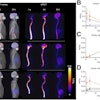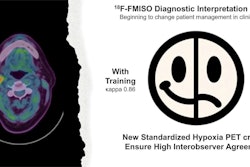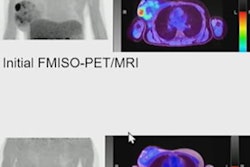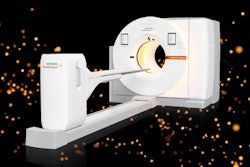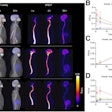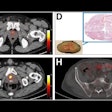PET imaging with F-18 fluoromisonidazole can determine whether cancer may spread in patients undergoing chemoradiotherapy for head and neck squamous cell carcinoma (HNSCC), according to a study published September 30 in JAMA Network Open.
The technique identifies a key biomarker called tumor hypoxia, which was associated with a 3.5-fold increased risk of distant metastasis in patients, noted lead author Chengcheng Gui, MD, of Memorial Sloan Kettering Cancer Center in New York City, and colleagues.
“Novel biomarkers are needed to identify patients at high risk of [distant metastasis] who may benefit from escalated therapeutic strategies,” the group wrote.
Tumor hypoxia is a prognostic and predictive cancer biomarker associated with resistance to treatment. Previous work by the researchers suggests that F-18 fluoromisonidazole (FMISO) PET can visualize hypoxia, yet there is little evidence on whether the findings can also predict whether cancer will metastasize, the group noted.
To address this knowledge gap, the authors pooled data from 281 patients with head and neck squamous cell carcinoma from two clinical trials conducted between 2004 and 2021. Participants had undergone FMISO-PET before and during chemoradiotherapy (CRT).
According to an analysis by nuclear medicine physicians, after a median follow-up period of 58 months, FMISO-PET showed that 73 patients (26%) had hypoxia-negative disease before CRT, 138 patients (49.1%) had hypoxia-positive disease before CRT and subsequently hypoxia-negative disease during CRT, and 70 patients (24.9%) had persistent hypoxia-positive disease before and during CRT.
Among patients with persistent intratreatment hypoxia, the incidence of distant metastases at two years was 10.2%, while the incidence of metastases was 2.4% among those without it. Among cases with hypoxia-negative disease before CRT, no patients experienced distant metastases.
In addition, overall survival estimates at five years were 89.1% among patients with persistent intratreatment hypoxia and 95.5% among those without persistent intratreatment hypoxia.
“Compared with prior studies focusing on pretreatment hypoxia, this analysis suggests that intratreatment hypoxia is of major clinical importance,” the researchers wrote.
Long-term survival of patients with head and neck squamous cell carcinoma is approximately 50% to 60% and while CRT improves locoregional control of the disease, patients who experience metastases have a poor prognosis, the authors wrote.
Identifying patients who are at a high risk of distant metastases can help clinicians devise better therapeutic strategies, including novel chemotherapy and immunotherapy regimens, they suggested. This is particularly important in patients with early-stage disease, for whom risk of locoregional failure is low, they added.
“These findings suggest that tumor hypoxia on FMISO-PET may serve as a biomarker of [distant metastasis] risk,” the researchers concluded.
The full study is available here.



